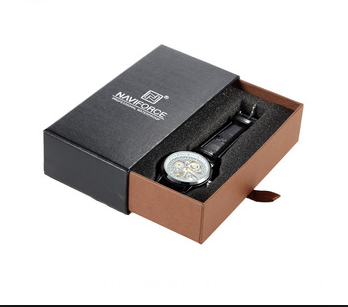Color printing is a method of copying images or texts in a color manner (corresponding to this is black-and-white printing, or monochrome printing). It includes many steps, or conversions, to produce high-quality color reproductions. The following are some of the major steps in color printing, as well as some historical developments.
Color separation process
The color separation process is used to digitally scan an original and divide the original into red, green, and blue components. Prior to the development of digital imaging, the traditional method of color separation was to photograph the image three times, each time filtering different light rays with corresponding color filters. However, after separation, the desired result is three gray images representing the red, green, and blue components of the manuscript.
The next step is to convert each color separation. When a red component image is generated, the resulting image represents the component of the image cyan. Similarly, shades of green and blue components are also generated so that magenta and yellow color separations are generated accordingly.
Cyan, magenta, and yellow are subtractive primary colors, because each color represents the two additive primary colors that are subtracted from white light by an additive primary color. Cyan, magenta and yellow are the three main pigments in color reproduction. Combining these three colors in printing allows a reasonable copy of the original, but this is not the case in practice. Due to the limitations of ink pigments, the resulting darker colors are more dirty and smeared. In order to solve this problem, we must also make a black version to improve the color of the dark part and improve the contrast of the image. There are many techniques for making this black version from the original image; these techniques include gray component replacement, background color removal, and background color addition.
Networking
Printing inks cannot be mixed. For this reason, only one color of ink can be printed at a certain position on the paper at a time. The visual mixture produced by the close proximity of the different colors gives the viewer the concept of continuously adjusting the image. To separate colors from each other, you can use the screen to achieve this purpose. The resulting dots are also called halftones or halftones.
The traditional halftone screen is made of two glass plates, each of which is lined with ink. The two glass plates are bonded together vertically. Through these screens, each color separation sheet was produced. A high-contrast image, once developed, forms dots of different diameters based on the amount of light received in that region, which produces a gray dichroic image.
Glass screens gradually disappeared after the appearance of high-contrast films, and high-contrast films were produced by using color separation films to obtain halftone screens. This is then replaced by a process in which the electrons are directly used to generate a halftone on the film. Currently, computer-to-plate (CTP) technology allows printers to completely eliminate the film part of the process. The computer-to-plate technology directly uses lasers to image the plates on the laser, which saves costs, improves quality (because it reduces duplication of reproduction), reduces the production time, and reduces the harm to the environment caused by toxic film processing chemicals.
Screens with 60 to 120 lines per inch (lpi) screens are used to copy color images from newspapers. This cannot achieve high-quality reproduction, but it is already the best mesh that cheap, absorbent paper can achieve. Finer dots will spread the ink and make the color dirty. The best way to see the halftones is to use a magnifying glass to check the images of the colored newspapers. Lines from 133 to 175 lines/inch are used for magazine printing and commercial printing.
The measure of how much paper is absorbed or spread is called the dot gain.
FM screening
The digital screening technology has also brought the screening process to a new level. The most famous is the FM screening. Because this kind of screening method is random, the moiré effect produced by traditional mesh tuning will not exist. Another advantage of FM screening is the ability to obtain a wider color gamut with the same ink.
Almost all inkjet printers use FM screening. If you have an inkjet printer at home, you can take a magnifying glass and look at your printed image.
FM screening or some traditional network cable screening and FM screening methods have gradually become standard screening methods for offset or lithography.
Cailang Packaging is able to produce a broad variety of wholesale paper watch boxes.
Sourcing our impressive selection of colors and styles and find the perfect watch cardboard boxes to suit your needs!
We also can provide different type's Watch Box, the main recommend box type is siding drawer box.
and the watch 's inner tray,we will recommend cotton pouch for you ,or sponge foam tray.
Watch Gift Box,Watch Storage Box,Watch Paper Box,Watch Gift Box,welcome to email us.

Watch Box
Watch Box,Watch Storage Box,Watch Paper Box,Watch Gift Box
Huizhou Cailang Printing Products Co.,Ltd. , http://www.paperboxs.nl
![<?echo $_SERVER['SERVER_NAME'];?>](/template/twentyseventeen/skin/images/header.jpg)